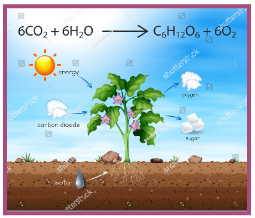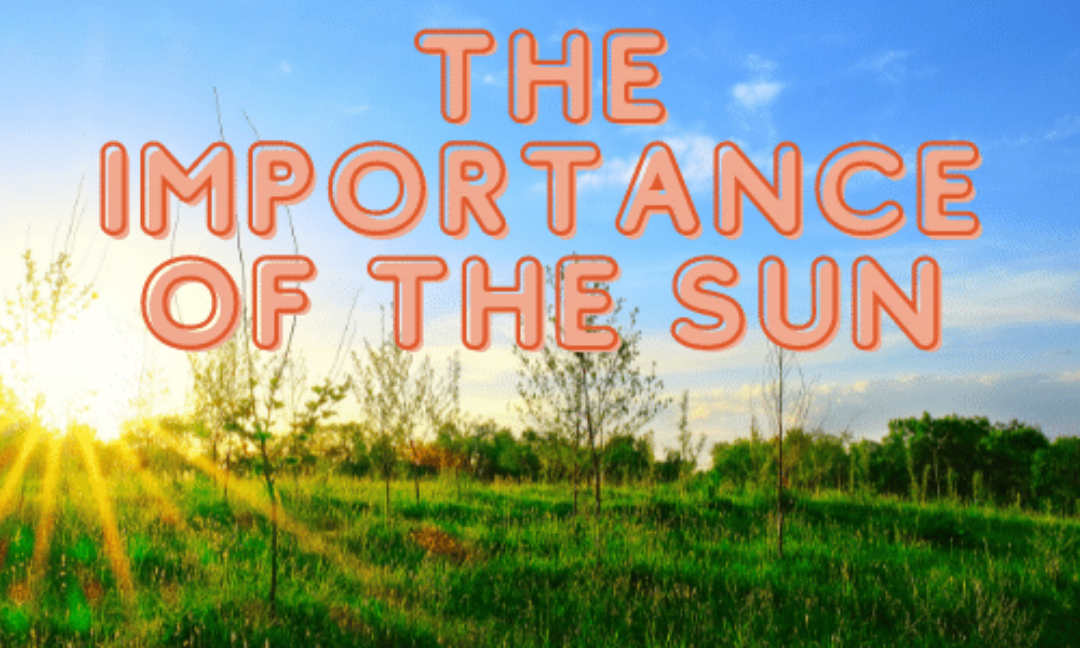The Importance of The Sun
Written By: Deana Bjedi
Edited By: Deana Bjedi
Designed By: Howie Nguyen
Published By: Howie Nguyen
The most important star in the solar system is the sun! Without it, there would be no life on Earth. Not only does the sun allow our existence but it also determines a lot about our daily lives and the planet like the seasons and temperatures changing and the circadian rhythm and sleep pattern we follow. The sun heats the Earth’s atmosphere for it to maintain an average habitable temperature of 14-15 degrees Celsius. Without the sun, the benefits of sunlight would not be available and above all, it would be far too cold to live on our planet.
Temperature and Seasons
The sun is essential in maintaining a habitable temperature on Earth. The Earth’s surface absorbs some energy from the sun while also reradiating some of it back into space. Some of the energy needs to be reradiated back into space so that the Earth doesn’t overheat. Besides maintaining the average global temperature habitable at about 15 degrees Celsius, the sun also determines which season each hemisphere is in. When the Earth’s axis tilts on either hemisphere, the amount of sun received by each hemisphere changes. When the North Pole tilts towards the sun, it is summer in the Northern Hemisphere and winter in the Southern Hemisphere, and vice versa. Therefore, the amount of sun received by each hemisphere determines the season that occurs.
Plant Processes
Plants are highly dependent on the sun to carry out vital processes like photosynthesis. Sunlight is an essential part of this process, without sunlight, plants would not be able to convert energy from the sun into sugar (their food). This process feeds plants and keeps them alive for a herbivore on the next level of the food chain to eat. Plants being the base of many food chains means they are vital to the survival of other species in an ecosystem. If plants didn’t exist neither would all the other organisms in an ecosystem and not only because there would be no food but also because there would be no oxygen. During photosynthesis, oxygen is also released which is essential in human and animal respiration, thus proving the essentiality of the sun to life on Earth once again.
Human’s
Besides the sun’s vital role in photosynthesis which provides oxygen for all of us to breathe and keeps plants nourished, the sun also provides many general benefits to humans that we should be taking advantage of. A very important vitamin that the sun provides for us is vitamin D, around 10-30 mins in the sun is enough to get your daily recommended amount depending on your skin tone. In Ontario, we do not get an adequate amount of sun all year round so it is often necessary to supplement this vitamin. Regardless of how we obtain our vitamin D, it has significant benefits for our bone strength and immune system. Sunlight even benefits our mental health, it can fight off depression by boosting your serotonin levels thus improving your mood.
Overall, the sun isn’t going anywhere as of right now so we will still have plants and oxygen for days. We don’t have to worry about the sun not being here to aid in the vital functions of our planet but we could definitely take advantage of the sunshine more while we have it in abundance during the summer. So go boost your serotonin and soak up some vitamin D!
References
Kazmeyer, M. (2018, March 13). Importance of the Earth’s atmosphere. Sciencing. Retrieved July 8, 2022, from https://sciencing.com/importance-earths-atmosphere-5070.html
Kozlowski, R. (2020, March 1). What is the Earth’s atmosphere composition & temperature? Sciencing. Retrieved July 8, 2022, from https://sciencing.com/earths-atmosphere-composition-temperature-19463.html
NASA. (2021, July 22). What causes the seasons? NASA. Retrieved July 8, 2022, from https://spaceplace.nasa.gov/seasons/en/
Raman, R. (2018, April 28). How to safely get vitamin D from the sun. Healthline. Retrieved July 8, 2022, from https://www.healthline.com/nutrition/vitamin-d-from-sun
Science and Technology Concepts Middle School. (2018, March 27). What is photosynthesis. Smithsonian Science Education Center. Retrieved July 8, 2022, from https://ssec.si.edu/stemvisions-blog/what-photosynthesis
Figure 1 Retrieved From: https://www.shutterstock.com/image-vector/person-winter-cold-summer-heat-thermometer-2072389610
Figure 2 Retrieved From: https://www.shutterstock.com/image-vector/process-tree-produce-oxygen-illustration-1114795847
Figure 3 Retrieved From: https://www.shutterstock.com/image-photo/happy-woman-on-sunset-nature-summer-667327660

